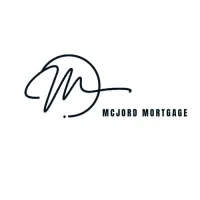
+1 2269663034
Blog Posts

Canadian Mortgage Trends for 2025: What Homebuyers and Homeowners Should Know
Introduction
The Canadian mortgage industry continues to evolve, influenced by economic conditions, policy changes, and shifting consumer preferences. The past several years have witnessed unprecedented volatility in Canada's housing finance ecosystem. From the pandemic-induced interest rate plunges to the subsequent inflation-fighting rate hikes, and now the gradual stabilization efforts by the Bank of Canada, mortgage consumers have experienced a rollercoaster of financial conditions. This dynamic environment has transformed how Canadians approach their largest financial commitment, creating both challenges and opportunities across different segments of the market. As we move through 2025, understanding current trends is essential for both prospective homebuyers and existing homeowners considering refinancing options.
Interest Rate Stability After Recent Adjustments
Following the Bank of Canada's policy rate changes throughout 2024, we're witnessing a period of relative stability in early 2025. After implementing several rate cuts in the latter half of 2024, the central bank has maintained its current position in the first quarter of 2025, bringing welcome predictability to the mortgage market after years of fluctuation.
Fixed-rate mortgages are currently offering competitive terms, with 5-year fixed rates hovering between 4.5% and 5.2% for well-qualified borrowers. Variable-rate options continue to attract interest from borrowers anticipating additional rate decreases, with discounts from prime ranging from prime minus 0.25% to prime minus 0.65% depending on qualification factors.
Financial analysts and economists predict that the Bank of Canada may implement one or two additional modest rate cuts in the latter half of 2025, contingent on inflation metrics and overall economic performance. This environment creates strategic opportunities for borrowers to secure favorable terms, particularly those with strong credit profiles and stable income.

Increased Competition Among Lenders
The Canadian mortgage industry in 2025 is characterized by heightened competition among traditional banks, credit unions, and alternative lenders. This competitive environment has led to more innovative mortgage products and flexible terms for qualified borrowers. Many lenders are offering enhanced incentives including:
Extended rate hold periods (up to 120-180 days)
Cashback options ranging from 1% to 2% of the mortgage amount
More flexible prepayment privileges
Portable mortgage options with improved terms
Blended mortgage products combining fixed and variable components
For consumers, this competition translates to potential savings and improved service quality. However, it also means navigating more complex choices, making professional mortgage advice more valuable than ever. Working with an experienced broker can help identify the optimal product based on individual financial circumstances and goals.
Digital Transformation of the Mortgage Process
The digitization of mortgage services continues to accelerate in 2025. Online applications, virtual document signing, and automated approval processes have become standard practices among leading Canadian lenders, including regional institutions. This technological evolution has significantly reduced the time from application to approval, with some lenders now offering same-day conditional approvals for well-qualified applicants.
Notable digital advancements in the Canadian mortgage sector include:
Fully digital mortgage applications with secure document upload capabilities
Advanced income and employment verification systems that minimize paperwork
Electronic property valuation tools that expedite the appraisal process
Integrated digital platforms connecting mortgage services with legal and insurance providers
Mobile mortgage apps allowing borrowers to track application status and communicate with specialists
Automated renewal processes with digital negotiation and acceptance options
Despite these technological advances, the value of personalized advice from mortgage professionals remains crucial, particularly for borrowers with unique financial situations or those navigating complex property transactions.
Focus on Sustainability and Green Mortgages
Environmental considerations have become increasingly important in the Canadian mortgage industry. In 2025, we're seeing expanded offerings of "green mortgages" that provide preferential rates or cash incentives for energy-efficient homes or renovations that improve a property's environmental performance.
Several major Canadian financial institutions have introduced enhanced green mortgage programs that offer interest rate discounts ranging from 0.10% to 0.25% for properties meeting specific energy efficiency standards. Additionally, some lenders are providing increased borrowing capacity for improvements that reduce a home's carbon footprint, such as high-efficiency heating systems, enhanced insulation, and solar panel installations.
The Canada Mortgage and Housing Corporation (CMHC) has also expanded its green home program, offering mortgage insurance premium refunds of up to 25% for buyers purchasing energy-efficient homes or implementing eligible energy-saving renovations. This growing focus on sustainability reflects both consumer demand and broader national climate objectives.
Regional Market Variations
The Canadian housing market continues to show significant regional variations in 2025, with mortgage trends reflecting these differences:
Greater Toronto and Vancouver Areas: These markets remain competitive with higher property values, leading lenders to offer specialized products designed to help buyers enter these markets, including:
Longer amortization options for certain buyer categories
Family guarantee programs allowing parents to support children's purchases without being co-signers
Shared equity arrangements beyond government programs
Rent-to-own structures with more favorable conversion terms

Mid-sized Urban Centers: Cities like Calgary, Edmonton, Ottawa, and Montreal are seeing steady growth with more balanced conditions. Lenders in these markets are focusing on competitive rates and terms, with particular attention to first-time homebuyer incentives and work-from-home renovation financing.
Atlantic Canada: Continuing to attract interprovincial migration, this region is seeing increased mortgage activity with specially tailored products addressing the unique housing stock characteristics, including older home renovation mortgages and vacation property lending.
Rural and Remote Areas: Lenders are developing more accessible options for rural properties, addressing historical challenges with property valuation and qualification requirements, partly driven by the sustained interest in properties outside major urban centers.
Alternative Mortgage Solutions and Private Lending
The alternative lending sector continues to grow in 2025, serving borrowers who may not qualify under traditional lending criteria. This includes:
Self-employed professionals with irregular income patterns
New immigrants with limited Canadian credit history
Investors with multiple properties exceeding conventional lender limits
Borrowers with credit challenges due to past financial difficulties
Private mortgage lenders now constitute approximately 12-15% of the Canadian mortgage market, offering solutions with simplified qualification criteria, albeit at premium interest rates typically 2-4% higher than traditional lenders. Several established alternative lenders have improved their product offerings with more competitive rates and terms, narrowing the gap with traditional financial institutions.
Institutional investment in the private lending space has also increased, bringing more standardization and improved consumer protections to this sector. For borrowers using these solutions, clear exit strategies remain essential, with most planning to refinance with conventional lenders once they establish or repair their credit profiles.
Specialized Products for Changing Demographics
Canadian lenders are increasingly developing specialized mortgage products tailored to changing demographic needs:
Multi-generational Housing Solutions: With more families combining households for financial and caregiving reasons, lenders are offering specific mortgage products for multi-generational properties, including options for legal secondary suites and laneway homes with adjusted qualification criteria.
Retirement Mortgages: For Canada's aging population, new products are emerging that address the unique needs of retirees, including reverse mortgage alternatives with more flexible terms and late-life mortgage options with qualification based on assets rather than income.
New Canadian Programs: Several major lenders have developed enhanced newcomer mortgage programs, recognizing the important contribution of immigration to the Canadian housing market. These programs offer more flexible down payment sources and alternative credit assessment methods.
Investment Property Financing: With continued strong rental markets in many Canadian cities, specialized investment property mortgage products have evolved, offering better terms for qualified investors and simplified approval processes for those with established rental portfolios.
Technology-Enabled Mortgage Servicing
Beyond the application process, technology is transforming how mortgages are serviced throughout their lifecycle:
Advanced payment scheduling with intelligent acceleration options to reduce interest costs
Automated equity monitoring with notifications when refinancing becomes advantageous
Integration with financial planning tools to optimize mortgage strategies alongside other financial goals
Predictive analytics helping lenders offer proactive solutions before payment difficulties arise
Digital portals enabling seamless mortgage transfers between properties when moving
These innovations are enhancing the borrower experience while creating efficiencies for lenders, ultimately benefiting consumers through more competitive offerings and improved service.
Conclusion
As we continue through 2025, the Canadian mortgage industry presents a mix of opportunity and complexity. Interest rate stability, increased lender competition, technological advancement, and product innovation are creating favorable conditions for informed borrowers.
Regional variations and specialized demographic needs continue to shape mortgage offerings across different markets, highlighting the importance of localized knowledge and personalized advice. The growing focus on sustainability reflects broader societal priorities, with financial incentives aligning environmental and economic considerations.
Looking beyond immediate market conditions, the trajectory of the Canadian mortgage market seems poised for further evolution. The lessons learned from recent economic volatility have fostered a more resilient approach to lending, with both financial institutions and regulators prioritizing stability while maintaining accessibility. This balanced approach benefits consumers who take the time to understand their options and leverage competitive market dynamics to their advantage.
©Copyright 2024 | Isioma Isamah | Agent Level 1| Search Mortgage Corp. Brokerage #12652| All Rights Reserved
